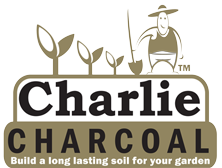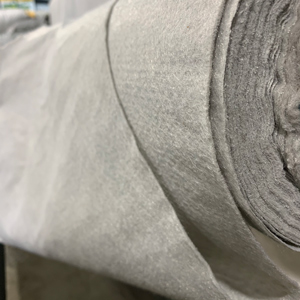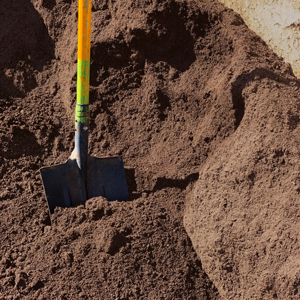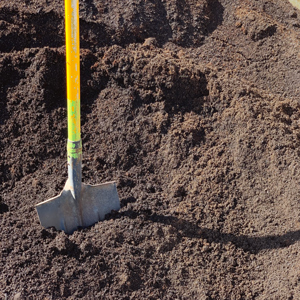| item(s), Total: $0.00 View Cart |
| Shopping cart is empty. |
Wicking Beds
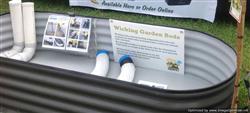
A wicking bed has been described as "a self watering pot on steroids".
It is a way of growing plants where water wicks up from an underground water reservoir by capillary action. Water use can be reduced by up to 50% from conventional growing systems, as evaporation is significantly reduced. There is no doubt that we need to be always looking at more efficient ways to use water in the garden.
Queenslander Colin Austin is credited with coming up with the concept of a wicking bed. Possibly the next big thing in our hot, dry summers as a water-saving tool, it is worth having a look at the concept and assessing whether they are an option for you.

The essential feature of a wicking bed is an underground reservoir of water in immediate contact with soil in the root zone. The water reservoir is typically filled with coarse organic material or aggregate. They can be 'closed systems' or 'open systems' and as simple as a polystyrene box or as complex as a large growing area incorporating worm farms and composting bins. Closed systems can be raised above the ground, and can be made from timber railway sleepers, old bathtubs, cut down water tanks or commercial corrugated raised beds - really, you are only limited by your imagination and budget! Closed systems can also be dug into the ground too, but have a waterproof membrane layer at the base separating the reservoir from the soil below. (Click here for a larger, downloadable PDF of the wicking bed illustration above.)
Open systems are incorporated into the ground, and are not completely closed off. At least one side is open, often with a slope incorporated to allow water flow towards a particular direction, for example alongside tree crops, where they can access the moisture with feeder roots, without stopping the ability for them to form deeper root systems into the ground.
The first part of a wicking bed you need to have is the waterproof membrane layer. This can be black plastic (make sure it is UV treated if it will be exposed to any sunlight), or a layer of pond liner material. While more expensive, this is usually much longer lasting. Underneath the plastic you may wish to use a layer of cardboard or newspaper to prevent any stones damaging the plastic. (Obviously, in a bathtub or any container which holds water, a waterproof layer is not required!)
The reservoir layer - What is scoria anyway?
The second part is the reservoir layer. This reservoir layer can be made from either fine bluemetal or gravel, coarse woody mulch (eg. tree prunings) or coarse river sand. There are advantages and disadvantages of all options - consider which you think would work best for you. On Eastern states websites you will see them recommending 'scoria'. This is a lightweight 'gravel' that is mined and readily available over east - but it is not found in WA. Scoria doesn't have any magical qualities; it's just their local material. Its lightweight and porous, but it's certainly not worth trucking over the Nullabor. Here, our recommendation is to use 7mm blue metal chips as an alternative. (We normally carry it @ GLSC.)
If using stones or gravel, use small ones. Bigger stones have a larger surface area, create larger voids between them and the wicking action is reduced. You may like to use a layer of geotextile fabric (available from Green Life soil Co and plumbing supply stores) or shade cloth between the stones and soil, to stop soil from falling down through the stones and thus clogging the gaps.
If using river sand, this is probably also recommended, to stop organic fines working their way down.
Be aware that the geotextile or shade cloth can also be a barrier, and may affect the wicking action.
The inventor of the wicking bed system prefers using a coarse woody material, due to its absorbency and the wicking being very effective. He also believes the nutrients released benefit plants and soil biology, resulting in improved growth. However, the downside of this is that the organic matter will break down over time, and will need to be topped up.
The recommended reservoir depth is 200mm. Due to the wicking action having its limit at about 300mm, going much deeper than 200mm is actually detrimental, and would result in a stagnant pool of water remaining which cannot reach the root zone.
You can use old plastic pots upturned, or rigid crates - anything that creates a void/hollow area for water holding - but will support the weight of the growing layer above.
The Growing layer
The last layer in a wicking bed is the growing medium. The depth of growing soil above the reservoir should be between 200 - 300mm, which is deep enough for most vegetable crops. A good, friable organic vegetable mix (like ours!) makes an ideal growing medium. Good drainage of the topsoil layer is critical. Remember that a wicking bed is like growing in a big pot - plants are depending on you to make sure they have adequate nutrition. Don't skimp - use a good quality soil and you'll get good results. We produce a special wicking bed mix designed for good results in shallower beds.
It is essential that between the reservoir and topsoil layers, you add an overflow drain. This prevents overwatering, allowing surplus water to seep out rather than waterlogging the topsoil, which would quickly kill your plants.
Watering the wicking bed can be by any conventional means - water will collect at the base and be wicked back upwards to the roots. However, the most efficient way to irrigate a wicking bed is to incorporate a distribution pipe in its design. This pipe, laid at the very base of the reservoir, should have an elbow join with a pipe coming up to the surface. This is used to water the beds, and you can also inspect the pipe to ascertain if more water needs to be added to the system. If you have an automated system, a moisture sensor can be incorporated. You can use a bung or lid on the pipe to prevent mosquitoes or dirt getting into it. It is a good idea to allow the reservoir to drain completely between irrigations so all the water is taken up, and not allowed to stagnate. Of course how often you need to water will depend on the climatic conditions at the time, and what you are growing. With a bit of observation, I'm sure a pattern would emerge to take the guesswork out of it.
.jpg)
A wicking bed system enables soil moisture to be maintained at a reasonably constant level, rather than being inundated with water during irrigation, then drying out. This stable moisture content actually benefits plants and many beneficial soil microbes, enabling increased soil biology and activity, resulting in better nutrient availability and thus healthier growth.
Just remember that if planting seeds into a wicking bed, the surface soil will be dry, and seeds will need to be watered conventionally until they have germinated and developed a root system deep enough to access the moisture below. It is still a good idea to mulch a wicking bed.
Greywater is not recommended for a wicking bed system, due to buildup of salts, fats, etc. in the greywater that will remain in the closed system.
(Pictured above right is a raised bed with bottom incorporated, which makes a perfect wicking bed. Kits are available, complete with pipes and accessories. Contact Water Installations for more information.)
Products for Wicking Beds
There are several products from our product range that are perfect for wicking beds in Perth. If you need help or advice to choose what’s best for you – please contact us today!
Wicking Bed Mix (formally known as Square Foot Mix) Bulk
- Price: 315.00
- Qty: Add to cart
- Find out more..
Get Growing Today!
Come on in!
Pick up bags or bulk product bring your trailer (or use one of ours) Opening hours: 8.30 - 4.00 Monday - Saturday (closed Sunday)
Shop Online - We Deliver
24/7 convenient & secure online shopping or support your local independent retail outlet
Get Growing
We guarantee our products. Ask our friendly staff for help & advice ~ we're here to help you achieve the garden of your dreams.



















